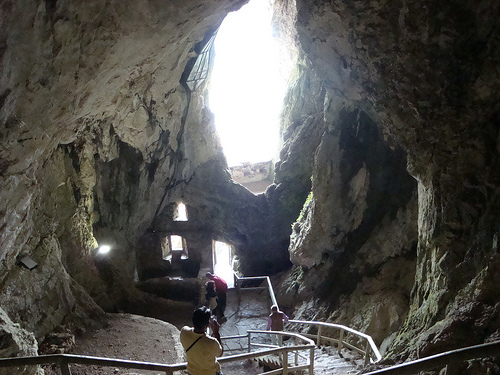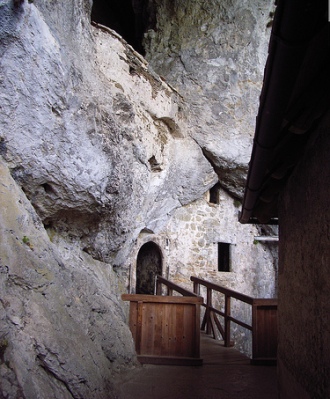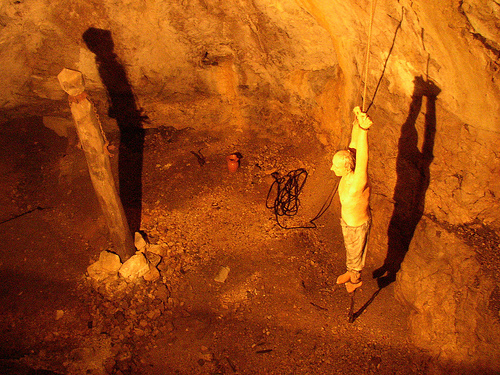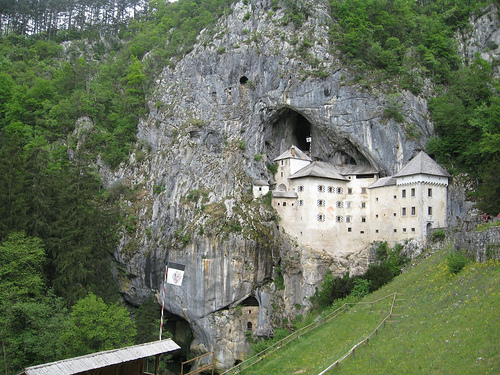

Location: 11 km from Postojna Map
Constructed: 13th century
Tel.(5) 751 6015
Open: May-Sep 9am - 7pm Apr & Oct 10:am - 6pm Nov-Mar 10am - 4pm
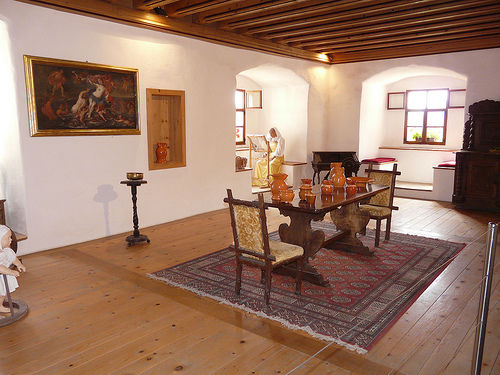
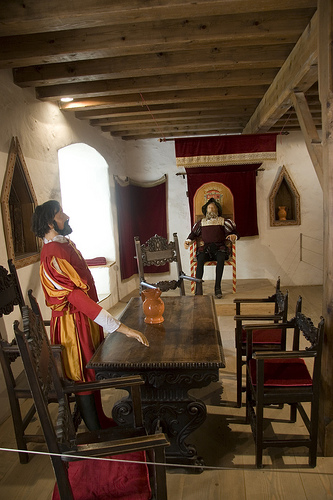
Predjama Castle is a medieval citadel situated on a 123 meter high cliff 11 km from Postojna in South- West Slovenia. Predjama Castle was constructed in 13th century at the entrance of the cave by the Patriarch of Aquileia. It was later acquired by the Lueger or Luegger family that were also known as Knights of Adelsberg. Its most famous resident was knight Erazem Lueger. He became famous as a robber baron. He made his living by assaulting trading caravans and retreated to his fortress with stolen loot. His fortunate changed however. Apparently Habsburg servant Imperial army Marshall Pappencheim insulted young noble by insulting his dead friend, Andrej Baumkircher of Vipava. Erazem Lueger killed Marshall and was forced to flee rage of Holy Roman Emperor Frederick III into his Predjama Castle. Imperial army under leadership of Governor of Trieste, Andrej Ravbar besieged the fortress, but cave system behind the citadel allowed defenders to supply the garrison from nearby village of Vipava. Erazem felt safe in his fortifications and even threw cherries from the walls and towers. Eventually aristocrat fell pray to betrayal. One of his servants agreed to put out a flag once castle's owner would go to a washroom. The toilet was hanging from the side of the tower and it was the most vulnerable part of the fort. A single shot from a enemy cannon took off the toilet where Erazem was sitting killing him instantly.
Predjama Castle was largely reconstructed in the 16th century. About the same time a treasure chest was buried in the cellar of the fortress. It was rediscovered only in 1991. The cave behind the castle known as a Predjama Cave is an extensive underground system with a total length of over 6 km, although only about 900 meters are open to the public. In the past it was used by the owners of the castle to store loot and valuable riches.
The history of the castle
The castle was first mentioned in 1274 when the original Gothic-
shaped Luegg Castle was built by the Aquileian Patriarchs . Under a
natural rock vault high in the wall, a giant inaccessible castle was
built in a giant hollow, which was later built and transformed by
the Luegg family, also known as the Predjama Knights. The Luegers,
as they were called, were the princely feudal lords and knights of
Predjama. Erazem Predjamski later joined King Matthias Corvinus ,
prompting the then Austrian emperor to command the Baron of Trieste,
Baron Gasper Ravbar.to subdue the robber knight Erasmus. After a
long siege of Predjama Castle, Erasmus was killed in 1484 with the
help of cunning. Because they could not beat him otherwise, they
bribed one of his men to betray him. He lit a candle in the window
of Erasmus's room, and this led the Trieste shooters who filled it
with stone bullets. Because they wanted to kill Erasmus as a
historical figure, they blew the story of a robber knight who died
on the toilet. In fact, at that time the castle was located only in
the upper part of the castle, called Jama or Luegg Castle, and there
was no front extension with a toilet at that time. The castle then
fell under the rule of the Oberburgs and the Purgstallers.
In 1567, Archduke Karel was leased to Baron John Cobenzl , who
bought the castle twenty years later. As early as 1570, the castle
was rebuilt and remodeled and a Renaissance building erected against
a vertical wall below the cave castle. The castle has remained in
this form to this day. In 1810 Predjama was inherited by Count
Michael Coronini-Cronberg , and from 1846 until the end of World War
II the castle was owned by the Windischgrätz family . After the war,
the castle was nationalized, and it houses a museum that is still
open today, showing medieval peasants' life and archeologicala
collection of objects found in pre-Roman underground systems that
testify to the presence of man since the Neolithic . There are also
exhibits of castle owners, weapons , furniture and hunting trophies.
During the national liberation struggle , a court and a partisan
printing press were in the castle. Here, on 30 August 1944, it was
formed from some units of the 31st Division of the Jesenice-Bohinj
Detachment , which subsequently operated in the Gorenjska region
until the end of the war.
